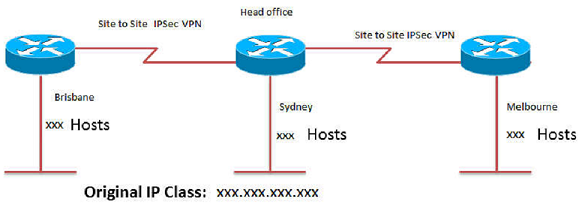Reference no: EM131022897
Homework 5-
1. Use the AD/AS model for this question. For each given scenario complete the following four steps:
Step 1: Draw the AD/AS model in long-run equilibrium. Label Yfe and the initial price level in this graph. Label all curves and both axes.
Step 2: In a second graph model the given event and identify clearly the new short-run equilibrium. This graph should include everything from the first graph as well as the short-run effect of the new event.
Step 3: Analyze verbally the short-run status of the economy: 1) is the economy in a boom or a recession?; 2) is unemployment relatively high or relatively low?; and 3) what is happening to the aggregate price level as this economy moves from the long-run position (step 1) to the short-run position (step 2)?
Step 4: Draw a graph indicating how this economy will reach long-run equilibrium. Describe verbally this adjustment process.
a. Holding everything else constant, the government increases its level of spending in the economy.
b. Holding everything else constant, the government enacts legislation that makes investment spending this year more profitable, and hence, more attractive to businesses.
c. Holding everything else constant, the central bank reduces the money supply.
d. OPEC increases the price of oil at the same time that there is a substantial loss in consumer and business confidence due to a financial crisis in the domestic economy.
2. Suppose you are provided the following t-account for the central bank of Macroland and the First Community Bank of Macroland. In Macroland assume that there is only one commercial bank, that this bank will not hold excess reserves and that there are no currency drains (that is, no one in Macroland holds dollars-all transactions are done using checkable deposits).

a. Given the above information, what is the required reserve ratio?
b. Given the above information, what is the money multiplier?
c. Given the above information, what is the level of the money supply?
d. Holding everything else constant, what happens to the money multiplier when the central bank increases the required reserve ratio? Explain the intuition behind your answer.
e. Suppose the central bank purchases $50 worth of T-bills from First Community Bank. Provide a t-account that illustrates the immediate impact of this purchase on both institutions. Then provide a t-account that illustrates the impact of this transaction on both institutions once full adjustment to this purchase has occurred.
f. After the full adjustment to the event in described in part (e), what is Macroland's money supply? Verify that the change in the money supply is equal to the money multiplier times the change in reserves.
g. Instead of the scenario described in part (e), suppose the central bank sells $100 worth of T-bills to First Community Bank. Provide a t-account that illustrates the immediate impact of this purchase on both institutions. Then provide a t-account that illustrates the impact of this transaction on both institutions once full adjustment to this purchase has occurred.
h. What is the change in the money supply given part (g)?
3. You are given the following information about an economy.
Money supply = Ms = 1000
Money demand = Md = 2000 - 200r where r is the interest rate expressed as a percentage and not a decimal (hence, 2% would be 2 in the equation and not .2)
Required reserve ratio = rr = 20%
There are no currency drains in this economy.
There are no excess reserves in this economy.
Labor demand = Ld: W/P = 20 - (1/1000)Ld where W/P is the real wage and Ld is the quantity of labor demanded
Labor supply = Ls: W/P = (1/1000)Ls where W/P is the real wage and Ls is the quantity of labor supplied
P = aggregate price level = 1 initially
Y = AKαL1-α is the aggregate production function for the economy
A = 20
K = 100
α = .5
C = 14,900 + .5(Y - T) - 10,000P
TR = 0
G = 200
T = 200
X = 1000
M = 1000
I = (20,000/3) - (1000/3)r
SRAS: Ys = 20,000P where Ys is aggregate supply
AD: Yd = C + I + G + (X - M) where Yd is aggregate demand
a. Start by finding equilibrium in the money market. Use the above information to determine the equilibrium interest rate.
b. Now, that you have the equilibrium interest rate calculate the level of investment in this economy when the money market is in equilibrium.
c. What is the full employment level of labor? Find the real wage, W/P, and the nominal wage, W.
d. Given the above information and your work in part (c), what is the real wage in this economy?
e. Find the full employment level of output for this economy.
f. If this economy produces at its full employment level of output, what will labor productivity equal?
g. Given the above information, calculate the aggregate price level for this economy when it is in long run equilibrium.
h. Suppose the Fed purchases $120 worth of T-bills in the open market. First predict what will happen to the new interest rate (r'), the new money supply (Ms'), the new level of investment (I'), the new short run level of Y (Y'), the new aggregate price level (P'), and the new real wage ((W/P)') because of this monetary policy. Then, find the new interest rate (r'), the new money supply (Ms'), the new level of investment (I'), the new short run level of Y (Y'), the new aggregate price level (P'), and the new real wage ((W/P)') because of this monetary policy.
i. Discuss the long run adjustment process that will occur as this economy moves from the short-run equilibrium you found in part (h) to the long run equilibrium.